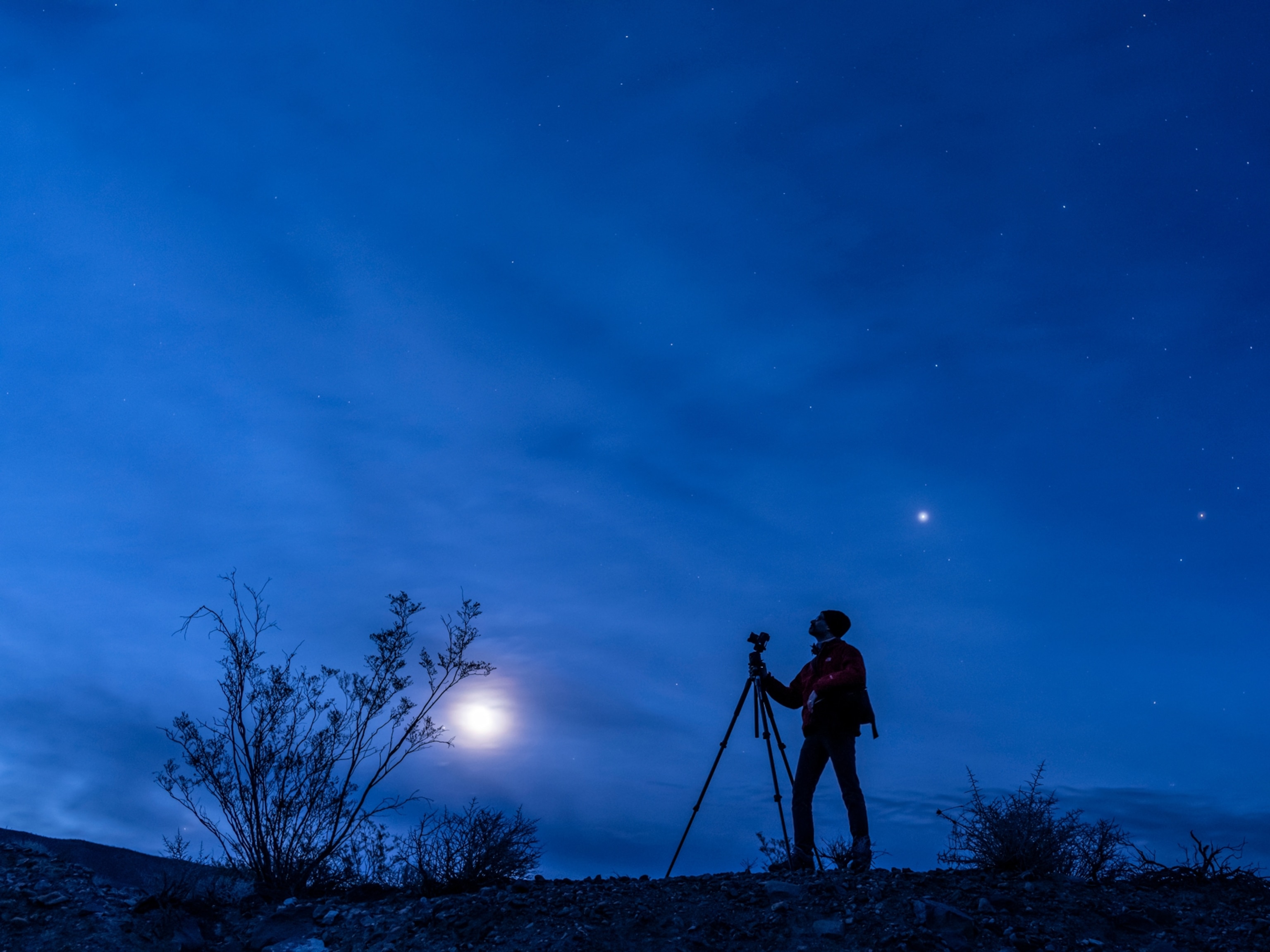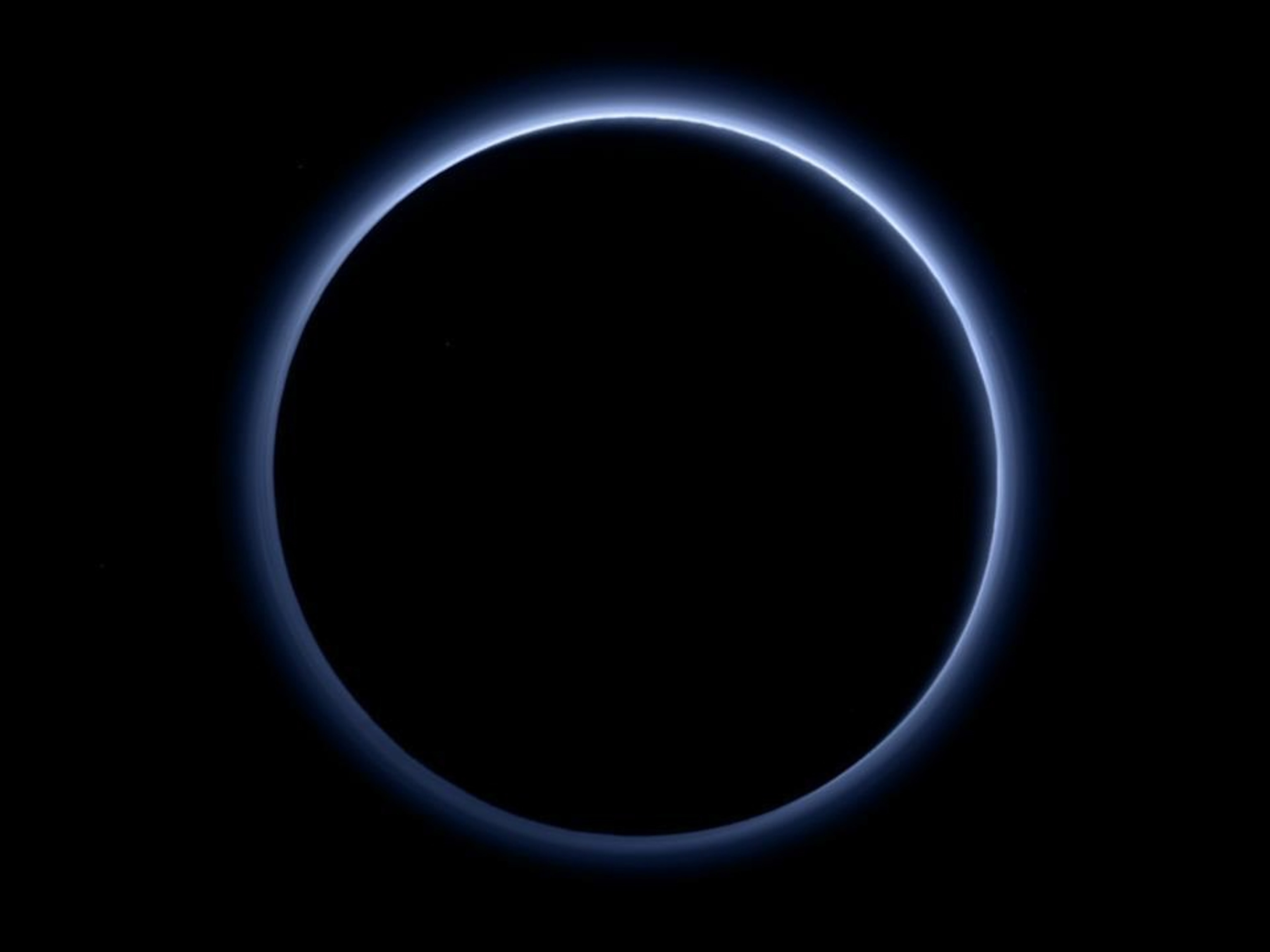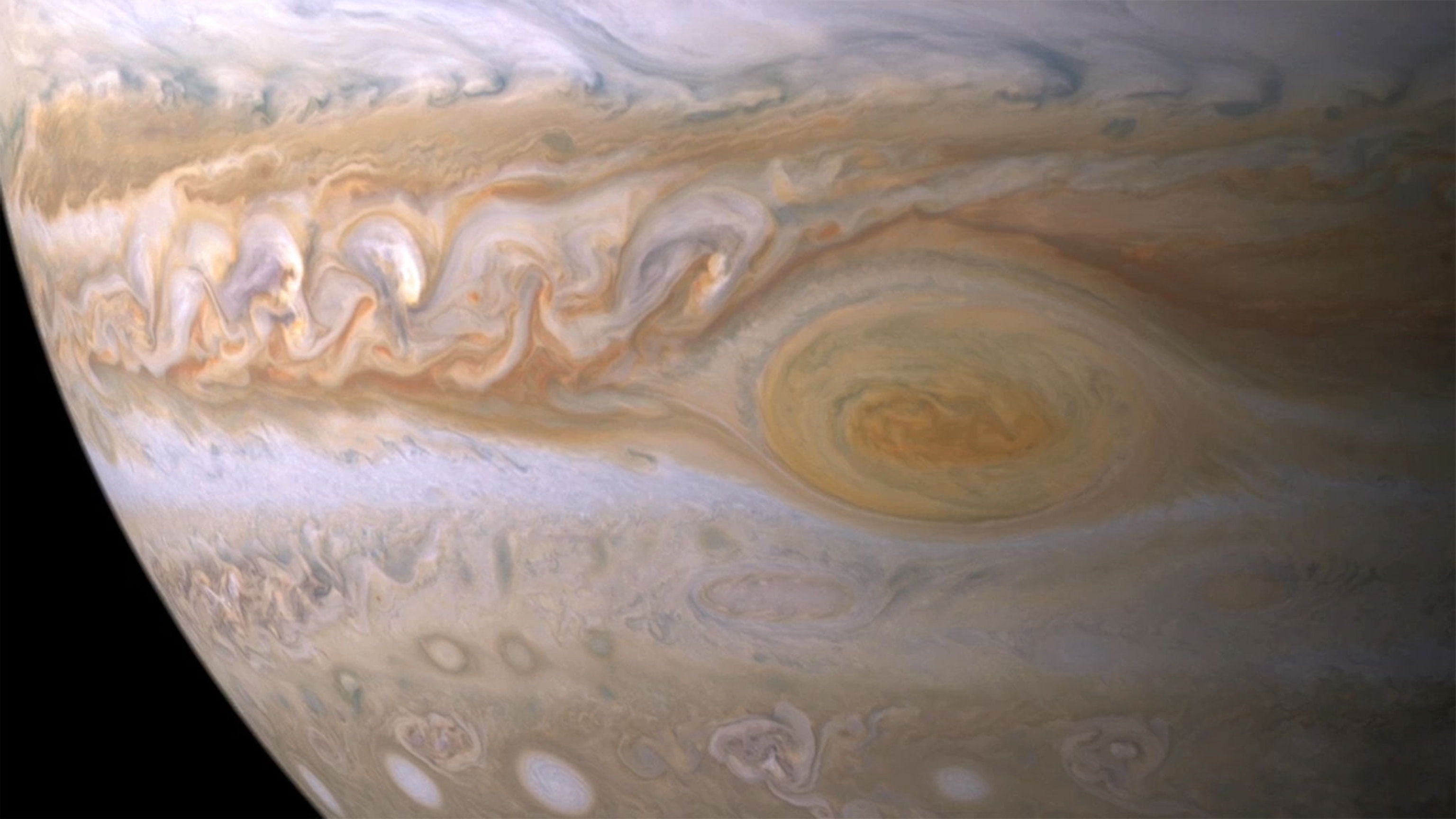
This Week’s Night Sky: Hunt for Jupiter’s Great Red Spot
Get out the backyard telescope to see the largest moon in the solar system glide across Jupiter, and look for the planet's enormous storm.
Moon and the Red Eye of Taurus. Late on the evening of Monday, February 15, you can look for the silvery moon to pose near the bright orange star Aldebaran in the southwestern sky. The moon will appear only three degrees from the 68-light-year-distant red giant—equal to the width of your three middle fingers at arm’s length.
Between Aldebaran and the moon will be the V-shaped Hyades star cluster. At about 150 light-years away, the Hyades is one of the closest clusters to Earth.
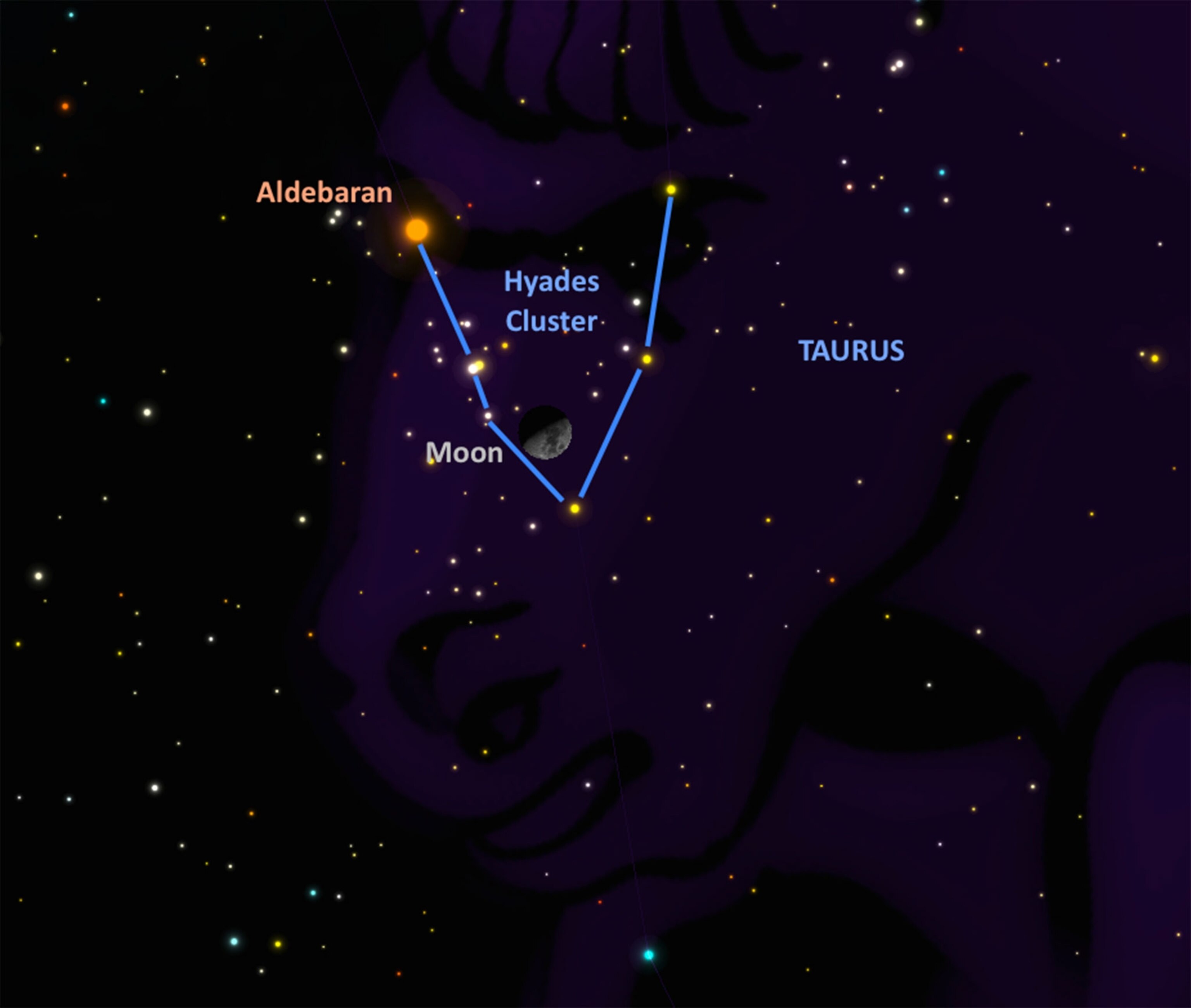
Hyades marks the face of the Taurus bull, and though only a half-dozen or so of its stars are visible to the naked eye, the cluster actually is home to as many as 400 stars. All are thought to be the same age—about 625 million years—and were born from the same cloud.
Jupiter’s Shadow and Storm. In the late evening on Tuesday, February 16, skywatchers with backyard telescopes trained on Jupiter will see a tiny black dot gliding across the planet’s cloud tops.
That small circular shadow will be of the largest moon in the solar system: Jupiter’s moon Ganymede. It will be visible from 10:57 p.m. to 2:18 a.m. EST. Then the moon itself will make its trek in front of Jupiter from 12:58 a.m. to 4:06 a.m. As an added observing challenge, look for the salmon-colored Great Red Spot—Jupiter’s giant cyclonic storm—to cross the center of the planet’s disk at 2:36 a.m. EST.
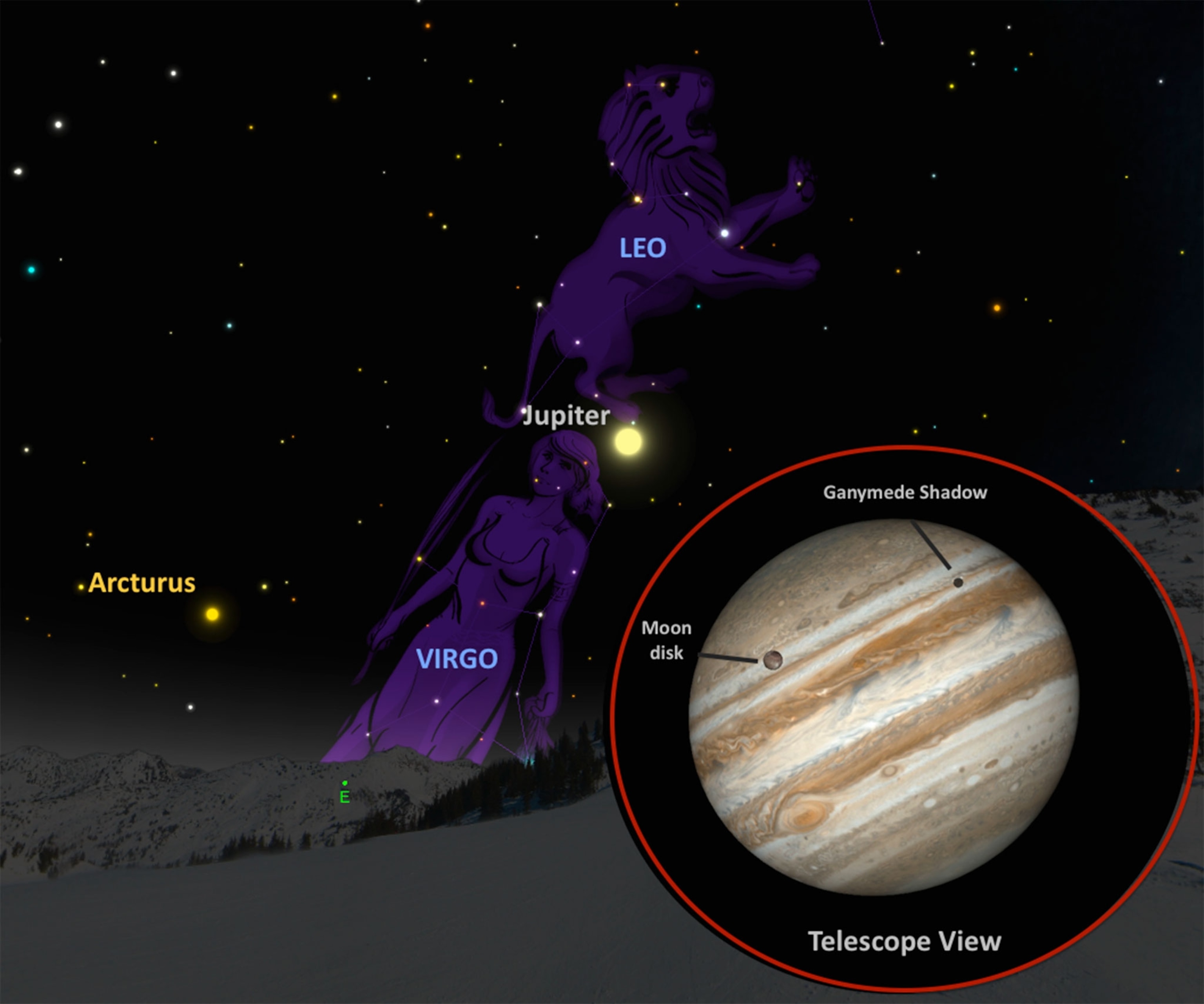
The planet’s iconic Great Red Spot has been observed for over two centuries and while recent observations by the Hubble Space Telescope have shown that it has shrunk in size, it’s still as tall as Earth and at least twice as wide. Just between 2014 and 2015, Jupiter’s hurricane shrank in size by about 150 miles (240 kilometers), but its wind speeds are as fierce as ever—clocked at 270 to 425 miles per hour (430 to 680 kilometers per hour).
Ganymede is larger than the planet Mercury and sports a thin oxygen atmosphere. It hides an ocean beneath a thick layer of ice, much like its sibling moons Callisto and Europa.
Sprinkling of Stars. On Saturday evening, February 20, look to the southeast skies for the waxing gibbous moon to be parked near the pretty open star cluster Messier 67 in the constellation Cancer, the crab.
The two objects will be separated by less than three degrees—about the width of your three middle fingers held at arm’s length. M67 shines at magnitude 6.9, meaning it can be spotted easily through binoculars and telescopes. But remember that lunar glare may wash out the cluster on Saturday, so wait a day or two for the moon to move away.
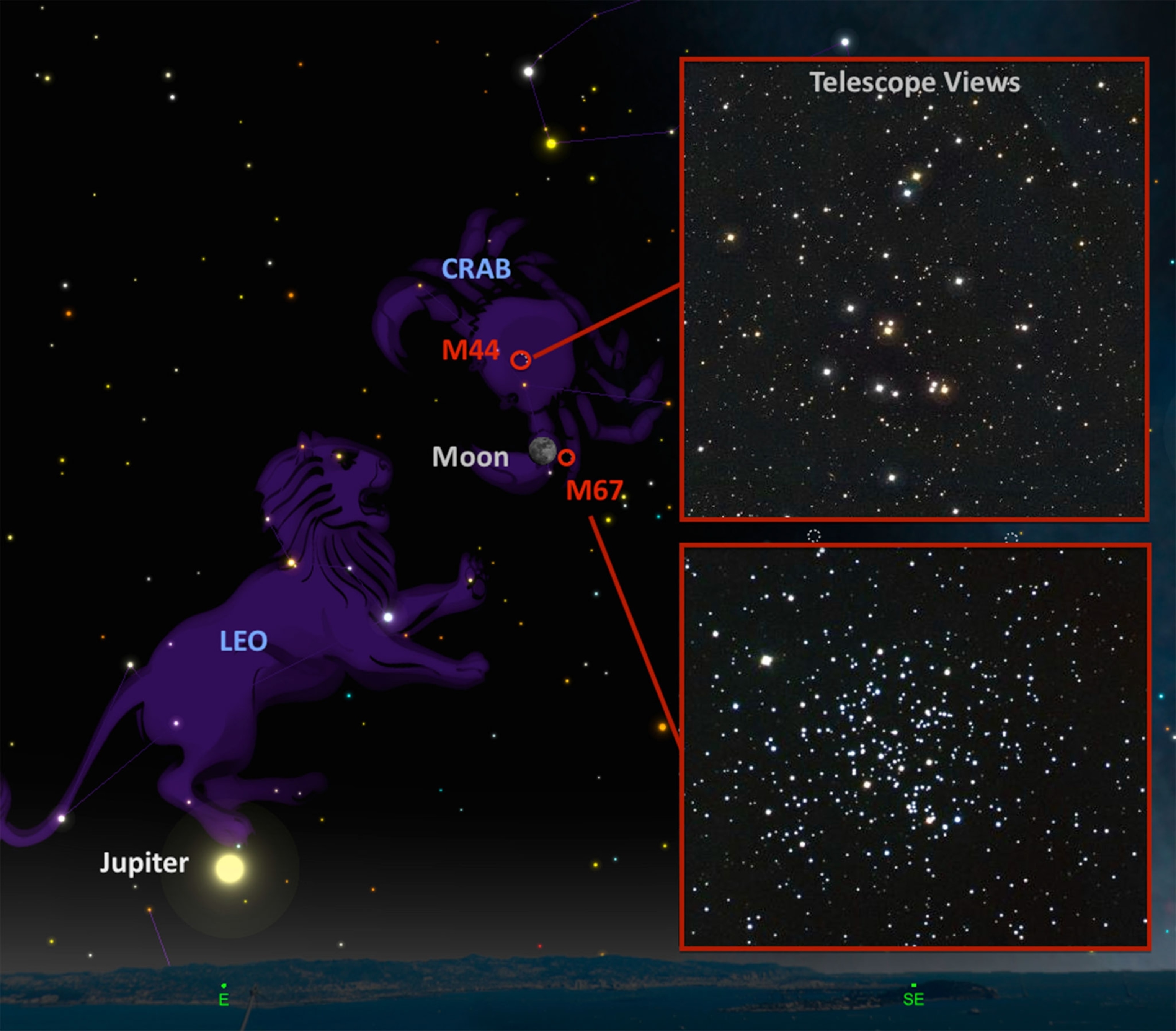
Hanging high above the plane of the disk of the Milky Way, M67 lies some 2,600 light-years from Earth. While binoculars will show only a faint sprinkling of stars surrounded by a ghostly glow, a telescope with at least a four-inch mirror will show it off as a rich star field with at least 50 stars visible, found within the same chunk of sky as the disk of the full moon.
Also, looking above the moon, about seven degrees away will be the even brighter open star cluster dubbed M44, or the Beehive.
Clear skies!
Follow Andrew Fazekas, the Night Sky Guy, on Twitter, Facebook, and his website.



